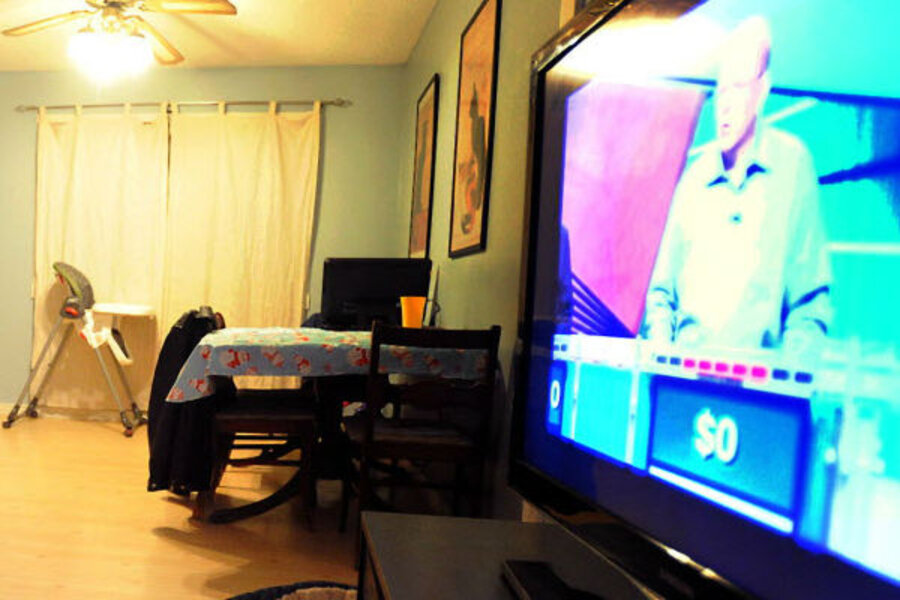Tipping television: a growing American child safety hazard
Loading...
When I lived in South Africa in the late 2000s, I heard a lot of worries about the growing collection of health problems people were noticing among children, who, as a group, were becoming increasingly overweight.
They had a name for this phenomenon. It was called “The American Disease.”
I couldn’t help thinking about that today as I read about another, new, American public health concern: Death, literally, by television.
Although the number of children killed by unintentional injury – the No. 1 cause of death for American kids ages 1 to 19 – fell by nearly 30 percent over the past decade, according to the US Centers for Disease Control and Prevention, a record number of American kids in 2011 were killed by falling televisions.
In a report released this week, the US Consumer Product Safety Commission said that 29 children in the US were killed by falling televisions in 2011, while 12 more were killed by tipping furniture and other appliances.
Now, that might still seem low, compared with the 436 children aged 1 to 4 who were killed by drowning, or the nearly 1,200 children aged 1 to 14 who died in traffic accidents (these are 2010 numbers from the CDC). But it's a big jump from 2000, when 7 children were killed by falling TVs. And when you look at injuries overall, the numbers get more intense: Overall, some 43,200 people, on average, are injured each year by televisions, furniture, and other appliances; children experienced the most injuries (13,800) with televisions.
Most of those kids are between the ages of 1 and 4. And one of the most common explanations for the tip-overs is “climbing.”
But it’s not that toddlers have suddenly become more interested in climbing, public health officials said. It’s that we have more televisions. And, in particular, flat screen televisions.
According to the 2010 Gadget Census from Retrovo, a consumer electronic review website, there are more televisions in America these days than people, with 1.16 televisions per capita. More than 70 percent of US households have a flat screen model, which tips far more easily than the big, boxy versions of years past.
Many of these flat screen televisions are on when nobody is actively watching. They are also in rooms that no adult is monitoring – including children’s bedrooms. (Studies have found that 70 percent of kids between 8 and 18 have a television in their own room.)
So the solution, the Consumer Product Safety Commission says, is for adults to make sure heavy furniture items and televisions are well anchored and bracketed to walls. Keep them from falling, and you automatically reduce the injury risk.
Which seems sensible. (I have already sent my panicked e-mail to Husband about our need to bracket various household items.)
But it’s kind of hard not to wonder about the larger issue, too. I mean, it seems that we should take a hard look at this new American hazard. Our stuff is harming us. Literally.
I wonder what my former neighbors would think about this one.








